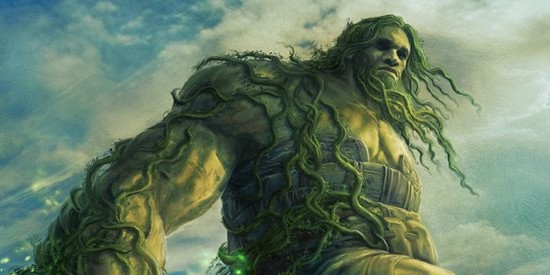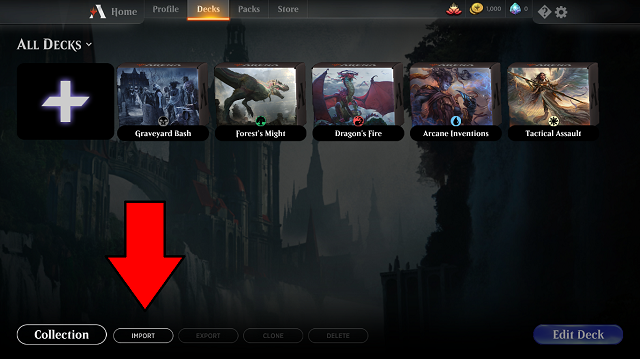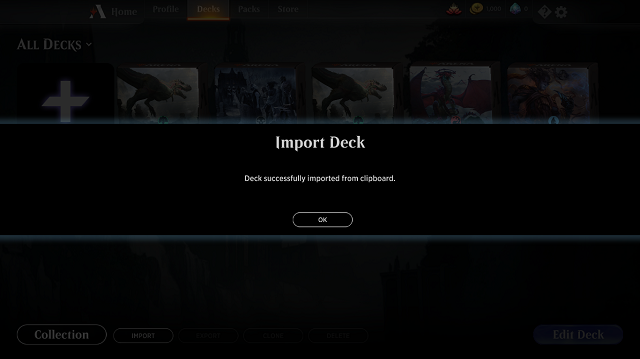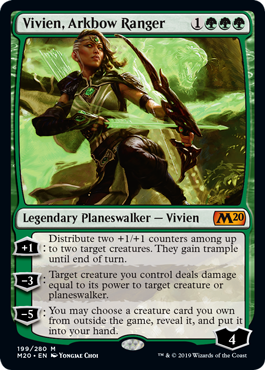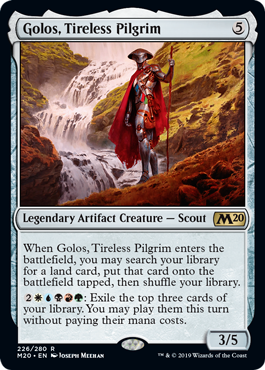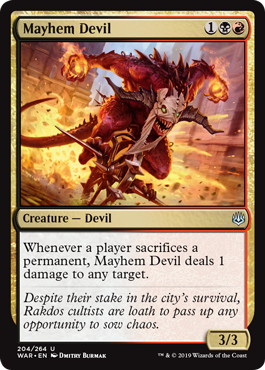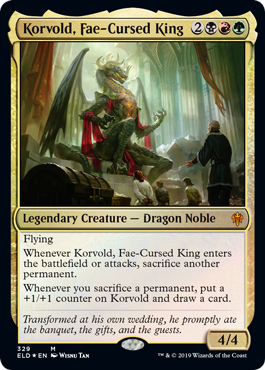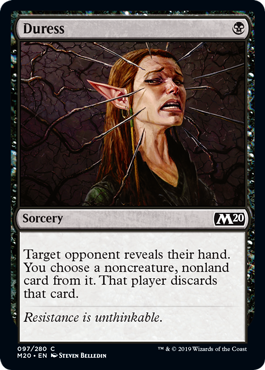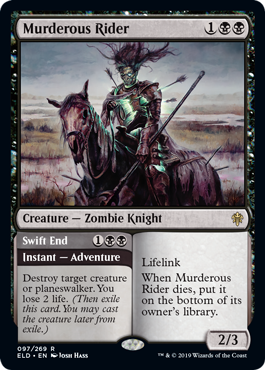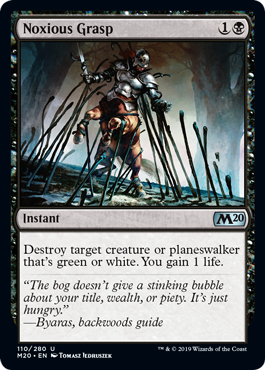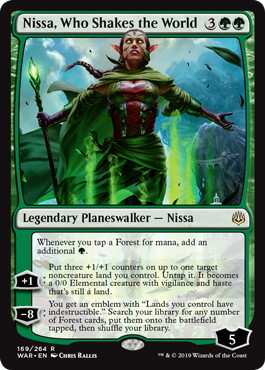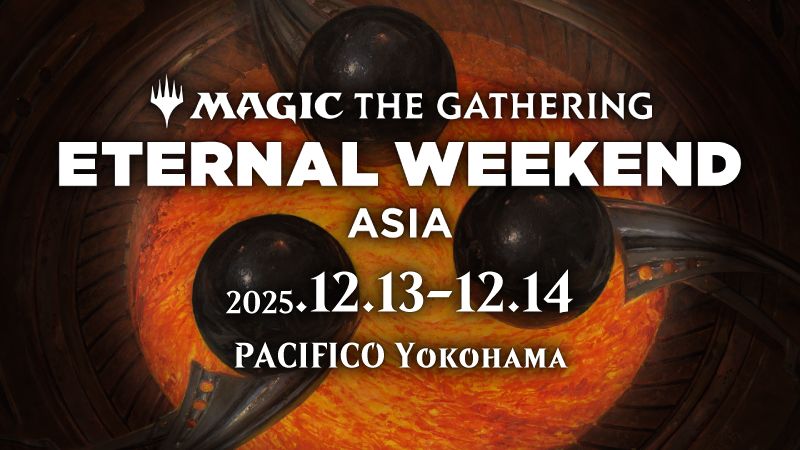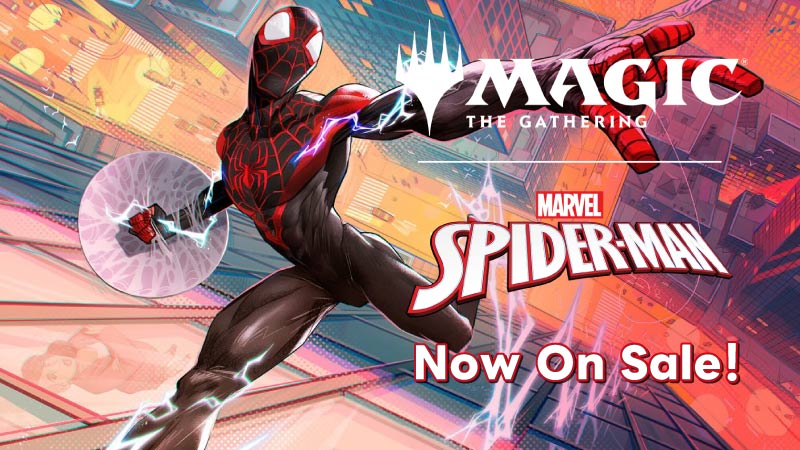Introduction
Last weekend I managed to win Mythic Championship VII.
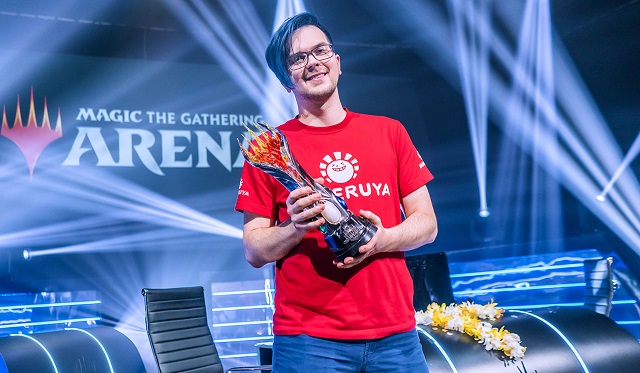
Image Copyright: Wizards of the Coast
Given that it was the best possible outcome available for me entering the tournament, I am pretty happy and excited to get to finally hoist a trophy. I have never won a large scale tournament before, and the trophy shelf at my house was glaringly empty. Not only did that change, but I also got qualified to World Championship in Hawaii in February, where I’ll be competing for money, fame, and most importantly a chance to get immortalized on a Magic the Gathering card. I’ve never made it to Worlds before either, and I’m very happy to be able to attend.
Deck and Preparation
- Piotr Glogowski
- – Jund Sacrifice
- Mythic Championship VII
- (Champion)
2 《Swamp》
1 《Mountain》
4 《Blood Crypt》
4 《Overgrown Tomb》
4 《Stomping Ground》
3 《Fabled Passage》
2 《Castle Locthwain》
-Land (25)- 4 《Cauldron Familiar》
4 《Gilded Goose》
4 《Mayhem Devil》
2 《Murderous Rider》
2 《Thrashing Brontodon》
2 《Korvold, Fae-Cursed King》
2 《Massacre Girl》
3 《Beanstalk Giant》
-Creature (23)-
3 《Lovestruck Beast》
2 《Deathless Knight》
2 《Wicked Wolf》
1 《Murderous Rider》
1 《Thrashing Brontodon》
1 《Korvold, Fae-Cursed King》
1 《Massacre Girl》
-Sideboard (15)-
I prepared for this tournament alone. The typical approach of gathering with a testing team and playtesting in secrecy is extremely unappealing to me. Part of it is that, unlike the majority of other MPL competitors, I enjoy streaming just as much as I enjoy the competition. I value creating good, honest, and entertaining content over the immeasurable benefit of not leaking technology leading into a tournament.
I also wouldn’t ever be comfortable registering a deck for the tournament without a sizable number of games on MTG Arena ladder or Magic Online leagues with it under my belt. Many players malign using online play to practice for tournaments, as an MPL level-layer should always have an inflated win percentage in such an environment, but I have always valued being able against a wide swath of players, archetypes and differing sideboard strategies.
That said, for this tournament, I made a conscious decision to try to find a good version of a tier-one archetype, devise good sideboard plans, and roll with it. Oftentimes I try to get fancy with my deck choices, frequently outsmarting myself. To this day I don’t know if my MC V deck – Black-Green Adventures with 《Vivien, Arkbow Ranger》 into the Golos meta – just didn’t work out, or if it was a plainly poor choice going into that tournament. Given the fact that I cut a now-banned card from my build, two of basically only other decks existing got banned too, and the archetype still doesn’t seem to be all that good really makes you think, huh.
Decklist submission deadline was not too many days deep into the new Standard format with no 《Oko, Thief of Crowns》, 《Once Upon a Time》, and 《Veil of Summer》, with two relevant tournaments happening before it – Twitch Rivals and an MTGO PTQ. Twitch Rivals was mostly dominated by Jeskai Cavaliers. The common opinion was that it was beating 《Cauldron Familiar》 decks. MTGO PTQ had an even split of Jeskai Cavaliers and Cat Oven decks in the top 8, including a Golgari build with 4 《Casualties of War》 maindeck.
This one piqued my interest. Over the last few days before submission, I played a lot of ladder games with the archetype; tried out many cards; did a targeted playtesting session versus Jeskai Fires against my good friend Louis Deltour, confirming my suspicions about the matchup being close, allowing me to cross out inflexible Jeskai as an option to play; figured that 《Beanstalk Giant》 fits the archetype ten times better than 《Paradise Druid》, played out specific sideboard numbers to get numbers right. Once I got my decklist into a place I liked, I streamed wit it for a day, did some last minor tweaks and registered it.
It didn’t take long during my exploration to find out that splashing for red cards makes the deck just insurmountably better. That claim seems to be supported by much better performance of Jund when compared to BG at the MC. When you compare both versions, Golgari is an extremely passive deck. It can get into situations where it has all the card advantage in the world, but lacks ability to close. Being a very defensively-slanted midrange deck is often unsafe, as people can try and get over the top of you rather easily.
Splashing for two insanely powerful threats that close the game quickly seems like a no-brainer for me. Cost of the splash is to run many more shocklands, but the format was nearly devoid of aggro decks; for some reason for a few days general population seemed to assume that you are not allowed to put 《Casualties of War》 in Jund, but there was actually no such rule in place. I was thoroughly surprised to see many players choosing Golgari as their weapon of choice for the MC.
《Beanstalk Giant》s were the big breakthrough for me where I really started liking my deck; I knew I wanted to support a playset of 《Casualties of War》; I knew I want to play red, and I knew that then-stock 《Paradise Druid》 was really bad in the format. A quick search for the words “mana” and “land” on MTG Arena reminded me of the Giant’s existence, and it was perfect. Ramping towards my big cards and fixing my colors, while not being weak to 《Mayhem Devil》, 《Massacre Girl》, and 《Deafening Clarion》s.
The Tournament
Back in September, right after Throne of Eldraine got released, I won my MPL split with Green-Black Adventures. That meant that I started MC VII with an insane advantage of a super-bye seeding me directly into day two of the tournament. I was able to sit out during day one, relax, and watch other people play their rounds. After not making day two at either of two previous Arena MCs, it felt a little bit off.
Day 2
When I finally got to play, it was one of those extremely pleasant tournaments where everything seems to be breaking your way. Your draws are decent, you don’t mulligan much, and your opponents aren’t always on the play with perfect openings. Given how small margins between winning and losing can be, you typically need some good luck to perform well at an event. I think for this one I gave myself good chances, choosing to play a solid version of a good archetype, and rode my insanely advantageous day two bye to victory.
Round one I faced off against Beatriz Grancha on Jeskai Cavaliers. Game one, an unfortunate 《Deafening Clarion》 she cast into my 《Mayhem Devil》 allowed me to clear her board too with Devil pings, after which I cemented my advantage with 《Casualties of War》. Game two, I managed to beat her down before she recovered from a mana stumble.
Round two my opponent was Miguel da Cruz Simoes in the feature match area. It was a mirror match, but I was confident in my build’s superiority in head to head match – I had more Casualties, more ramp, more 《Korvold, Fae-Cursed King》s, and 《Murderous Rider》s to actual answer Korvold. He had 《District Guide》s and 《Wicked Wolves》, which are unimpressive in the mirror match at best. On top of that, he was stumbling a little. I wasn’t and I swiftly 2-0’d.
Round three I played my first match versus Simic Flash – a deck that seemed to take the tournament by a storm – against Brad Nelson. Since this build of the archetype unknown before the tournament, I haven’t practiced against it. I won an extremely long game one, where on turn twelvish my 《Casualties of War》 just resolved, taking care of a giant 《Hydroid Krasis》, 《Nissa, Who Shakes the World》, and an animated 《Breeding Pool》; a play that few turns later I followed by wiping Brad’s board with a 《Massacre Girl》, casting a 《Mayhem Devil》, and sacrificing all eight Food tokens I amassed throughout the game to my 《Cauldron Familiar》 to clear Brad’s eight loyalty Nissa. It’s was a truly interesting one, and it’s a shame it wasn’t recorded. Game two, I boarded poorly, leaving many of my expensive cards still in the deck, but I was able to still win with a 《Duress》 into an early Korvold. Third 2-0.
Round four came against Ally Warfield. Her deck of Choice was Golgari Clover Adventures. While she was equipped with three 《Casualties of War》 herself, with 《Lucky Clover》/《Beanstalk Giant》 combo to ramp into them, she drew the one-toughness part of her deck, which stood no chance to my 《Mayhem Devil》 and made the games quick and not very competitive. I won 2-0 quickly.
Given the structure of the tournament, acquiring my fifth match win would immediately qualify me for the top 8. It feels insane to play your top 8 win-and-in after just four matches, but here we were. Andrea Mengucci was the only other competitor at 4 wins at that time, so we got paired. I was afraid of his deck, as 《End-Raze Forerunners》 easily go over the top of my cats. At the same time, 《Risen Reef》s are somewhat vulnerable to 《Mayhem Devil》, so it’s also possible that it’s a matchup that’s going to tend to produce lopsided games. There was not only top 8 on the line – we also fought for pride. Ever since I lost the finals of Mythic Invitational to Andrea, I claim him to be my archenemy. It’s a one-sided rivalry, but I always wanted Magic tournaments to be more like YU-GI-OH anime, so I’m trying to do what I can.
Our match was recorded on coverage. Game one he went way over the top of me. Game two, not much happened, until I beat him down with a 《Beanstalk Giant》. Game three was really close. At one point, I couldn’t kill his Nissa before he gets to untap. I performed the other best play I could have went with, remembering that Andrea ran out a 2/2 《Hydroid Krasis》 earlier in the game, a strong signal that he might be holding another one. I accepted that he basically wins on the spot if he gets to put all that extra Nissa mana into an X spell, and assumed I will need to win another win and in.
But then he untapped, played a tapped 《Breeding Pool》, animated it, and didn’t cast anything. Once again things broke my way, and he just wasn’t holding anything. I won shortly thereafter, performed an awkward handshake-fistbump-handshake switcheroo and winner’s interview with Becca Scott, and chilled out for the rest of the day.
🎉Congratulations to the incredible #MythicChampionshipVII Top 8! 🎉@kanister_mtg @Mengu09 @fffreakmtg @PVDDR @edmvyrus_ @JavierDmagic @Kavartech @SethManfield
— Magic Esports (@MagicEsports) December 8, 2019
Tune in tomorrow at https://t.co/GF4H5so3jq to see who will take home the trophy! 🏆 pic.twitter.com/k6I2fNB9At
At this point, the dream of making it to Worlds started becoming real, but after all eight Sunday players were known, I learned that depending on other player’s scores I’ll need to win the entire tournament or get second to get that invite.
Sideboard Plan against Simic Flash
Since all three players playing the new build of Simic Flash also made top 8, I spent the evening playtesting this matchup against my friend Luis Salvatto. Props to Seth Manfield, Brad, and Javier Dominguez, as their deck impressed me and their collective results were crazy good. 《Nightpack Ambusher》 was always an extremely powerful card, but the supporting cast was lacking at times – 《Spectral Sailor》 and 《Brineborn Cutthroat》 can be somewhat mopey at times, so introducing another powerful, cascading threat in Nissa into the deck just makes a lot of sense. You only need to counter a few important spells when your threats bury your opponent behind with each turn.
After my session with Luis, I was pretty sure the matchup doesn’t favor my build in game one, but we devised a simple sideboard plan that I employed against all three of them:

Against Simic Flash
I cut all my expensive cards except for Korvold, which is powerful and you can resolve him whenever a window opens up. I also put all of the stupid, unimpressive monsters to be able to put them on a clock. Putting them on a clock and developing random bodies makes both counterspells and Nissa much less effective. 5/5 blocks Ambusher and it’s wolves well; 《Thrashing Brontodon》 matches up well against Nissa’s lands and 《Frilled Mystic》.
The biggest problem card they ran in their sideboard was two copies of 《Sorcerous Spyglass》, which could stop my engines big time. I even tried trimming a Familiar and an Oven to reduce my exposure to Spyglass but found the Cat Oven combo too effective and too important to trim. Fortunately enough for me, Brontodon, which I mainly wanted for the body, served as an accidental answer to Spyglass; in fact, Seth actually cut one of the Spyglasses against me for game three after seeing a Brontodon in game two, which is an interesting scenario where I think he wanted to game my sideboard choices, but I was actually happier when it wasn’t in his deck.
I think the sideboard plan was very good given the tools I had available to me. It was a good lesson in trying to make the most out of the cards that I registered, as I didn’t account for Simic Flash while deckbuilding, because it wasn’t a known deck.
Going forward, I think a much more effective sideboard plan could include fewer 《Duress》es, no 《Lovestruck Beast》s, some 《Shifting Ceratops》, and 《Noxious Grasp》s. 《Noxious Grasp》 especially seems perfect there – Simic Flash’s plan is to put their opponent in a squeeze with a powerful cascading threat for just long enough to win. Grasp would easily allow you to pass turns when necessary, threatening to maximize 《Trail of Crumbs》 while keeping Ambusher and Nissa in check without walking headfirst into 《Frilled Mystic》. Ceratops is a good threat that they can’t always interact with, although it’s not exactly ideal against 《Aether Gust》 on the stack nor Nissa or Ambusher who already got going.
Day 3
Preparation for the matchup paid off, as my route to victory in the top 8 included playing against all three Simic Flashers and Paulo Vitor Damo da Rosa. Top 8 was full of interesting and close games; if you haven’t watched it, I’d really recommend especially my entire match versus Paulo and game two against Javier.
In the end, I faced Brad Nelson in the Grand Finals of the tournament. We battled for the trophy, 50k$ prize difference, and Worlds invitation. Except because of the tournament structure – top 8 was double elimination, and I haven’t lost yet – he needed to defeat me twice. I lost unfavored uneventful game one. I went for a hail mary 《Casualties of War》 on the last turn, recognizing that even though it’s extremely unlikely it will resolve, it’s my only chance. It got 《Aether Gusted》. It’s okay because I think my matchup improves post-board. I win an uneventful game two.
Game three, my hand is extremely good. I keep accruing advantages. It gets a little grim for a moment when Brad deploys his second Nissa I have no answer to, but I find a 《Mayhem Devil》 to ping her down just in time. Brad smiles at me, roped me, and finally concedes. I was later told that I failed to realize he was setting up for that last final “Your go” emote from me, but I failed to realize that and I didn’t deliver. I became the champion, gave an awkward interview to Day9, and claimed the trophy. Good times were had. I was excited.
Possible Changes in the Future
Going forward, I won’t play more tournaments of this Standard format, so I won’t be putting work into updating the decklist as I’ll be focusing on Modern, Pioneer, and yet-to-be-announced formats for World Championship. However, some pointers:
The shell is definitely powerful, flexible, and fun to play going forward.
Conclusion
Huge thanks to my Hareruya mates who I stayed with and who supported me; Luis Salvatto, Sebastian Pozzo, and Matias Leverato; thanks to my wonderful girlfriend Katarzyna, who cheered for me from Poznań; and thanks to my twitch chat, who did a good job spamming tournament’s Twitch chat and my Discord channel while I was playing. It was awesome to get there, and here’s hoping for many more.


